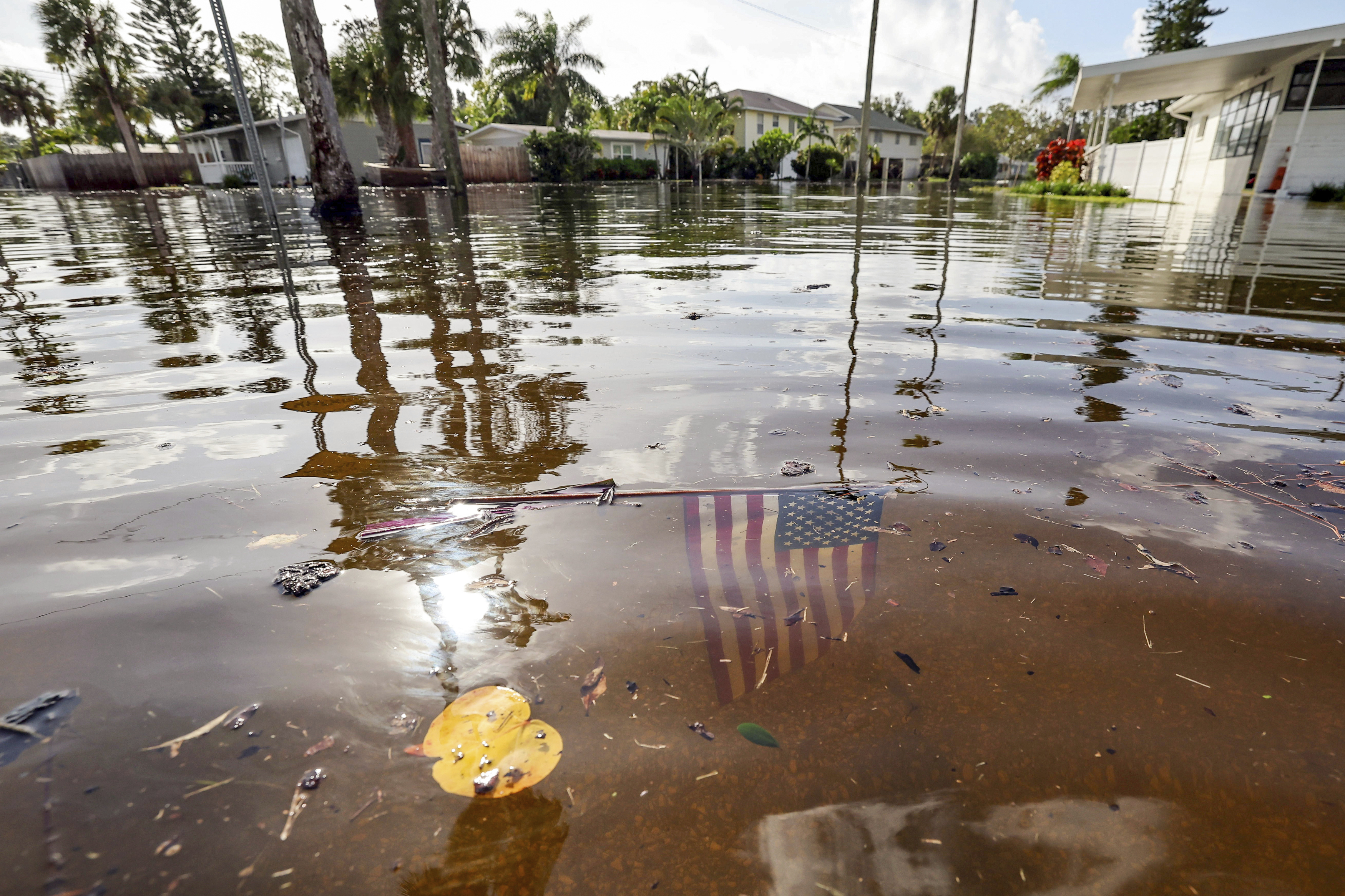PERRY, Fla. (AP) — Massive rains from powerful Hurricane Helene left people stranded, without shelter and awaiting rescue Saturday — as the cleanup began from the tempest that killed at least 52 people, caused widespread destruction across the U.S. Southeast and left millions of customers without power.
Helene blew ashore in Florida’s Big Bend region as a Category 4 hurricane late Thursday packing winds of 140 mph (225 kph) and then quickly moved through Georgia, the Carolinas and Tennessee, uprooting trees, splintering homes and sending creeks and rivers over their banks, churning up tornadoes and straining dams.
HURRICANE HELENE UPDATE Operation Blessing is bringing relief in hard-hid Georgia. Additional disaster relief staff from around the world are en route to North Carolina. https://t.co/0VNWBCDOdr pic.twitter.com/GVJ9y5Wqks
— Operation Blessing (@operationbless) September 28, 2024
Western North Carolina was essentially cut off because of landslides and flooding that forced the closure of Interstate 40 and other roads.
There have been hundreds of water rescues, none more dramatic than in rural Unicoi County in East Tennessee, where dozens of patients and staff were plucked by helicopter from a hospital rooftop Friday. And the rescues continued into Saturday in Buncombe County, North Carolina, where part of Asheville is under water.
“To say this caught us off-guard would be an understatement,” said Quentin Miller, the county sheriff.
There have been deaths in the county, but Emergency Services Director Van Taylor Jones said Saturday that he wasn’t ready to report specifics, partially because communication outages hindered efforts to contact next of kin. Multiple cell towers are down in the area.
Among the desperate family members waiting for news was Francine Cavanaugh, who last talked to her sister as the storm was hitting Asheville. “Scary” is how it sounded to her. Cavanaugh, who lives in Atlanta, said her sister told her that she was going to head out to check on guests at a vacation cabin. Cavanaugh hasn’t been able to reach her since then, and the area is now flooded.
“I think that people are just completely stuck, wherever they are, with no cell service, no electricity,” she said.
The storm, now a post-tropical cyclone, was expected to hover over the Tennessee Valley on Saturday and Sunday, the National Hurricane Center said. It’s creating flooding that hasn’t been this bad in a century in North Carolina. And in Atlanta, where only car roofs peeked above flood waters in some neighborhoods, 11.12 inches (28.24 centimeters) of rain fell over 48 hours. That’s the most the city has seen over two days since record keeping began in 1878.
President Joe Biden on Saturday called the devastation caused by Helene “overwhelming” and said his administration was committed to helping the huge swath of the Southeast impacted by the storm to recover.
Helene is the deadliest tropical storm in South Carolina since Hurricane Hugo killed 35 people when it came ashore just north of Charleston in 1989. Deaths also have been reported in Florida, Georgia, North Carolina and Virginia.
Moody’s Analytics said it expects $15 billion to $26 billion in property damage. AccuWeather’s preliminary estimate of the total damage and economic loss from Helene in the U.S. is between $95 billion and $110 billion.
Climate change has exacerbated conditions that allow such storms to thrive, rapidly intensifying in warming waters and turning into powerful cyclones sometimes in a matter of hours.
Evacuations began before the storm hit and continued as lakes overtopped dams, including one in North Carolina that was featured in the movie “Dirty Dancing.” The initial worry was a surge that forecasters warned wasn’t survivable.
While the surge claimed lives in Florida, none of the victims were from Taylor County, which is where the storm made landfall. It came ashore near the mouth of the Aucilla River, about 20 miles (30 kilometers) northwest of where Hurricane Idalia hit last year at nearly the same ferocity.
“If you had told me there was going to be 15 feet to 18 feet (4.57 meters to 5.49 meters) of storm surge, even with the best efforts, I would have assumed we would have had multiple fatalities,” Florida Gov. Ron DeSantis said during a news conference Saturday.
The county went years without taking a direct hit from a hurricane. But after three storms in a little over a year, the area is beginning to feel like a hurricane superhighway.
“It’s wiped out a lot. It’s bringing everybody to reality about what this is now with disasters,” said John Berg, 76, a resident of Steinhatchee, a small fishing town and weekend getaway.
Particularly hard hit was Florida’s Big Bend, a part of the state where salt marshes and pine flatwoods stretch into the horizon, and where the condo developments and strip malls that have carved up so much of the state’s coastlines are largely absent.
It’s a place where Susan Sauls Hartway and her 4-year-old Chihuahua mix Lucy could afford to live within walking distance of the beach on her salary as a housekeeper.
At least, until her house was carried away by Helene.
“It’s gone. I don’t know where it’s at. I can’t find it,” she said Friday as she wandered around her street near Ezell Beach, searching for where the storm may have deposited it.
In the wealthy enclave of Davis Islands in Tampa, where star athletes like Derek Jeter and Tom Brady have lived, no one died, but homes, businesses and apartments were flooded.
And power is out for nearly everyone in Perry, Florida, where cars started lining up before the sun rose on Saturday at a free food distribution site. Sierra Land said although her home seems to have dodged any major damage, with no electricity, she’s lost everything in her fridge.
“We’re making it one day at a time,” Land said as she arrived at the Convoy of Hope distribution site with her 5- and 10-year-old sons and her grandmother.
Thousands of utility crew workers descended upon Florida in advance of the hurricane, and by Saturday had restored power to more than 1.9 million homes and businesses. But hundreds of thousands remain without power there and in Georgia, where utilities urged patience.
Georgia Emergency Management and Homeland Security Agency Director Chris Stallings said crews are focused on opening routes to hospitals and making sure supplies can be delivered to damaged communities.
“Unfortunately, treacherous conditions remain across the state with crews navigating extensive tree damage, persisting flooding conditions and many road closures,” Georgia Power, the state’s only private electric utility, said in a news release.
Helene was the eighth named storm of the Atlantic hurricane season, which began June 1. The National Oceanic and Atmospheric Administration has predicted an above-average season this year because of record-warm ocean temperatures.
–
All Contents © Copyright 2024 Associated Press. All Rights Reserved.



)



